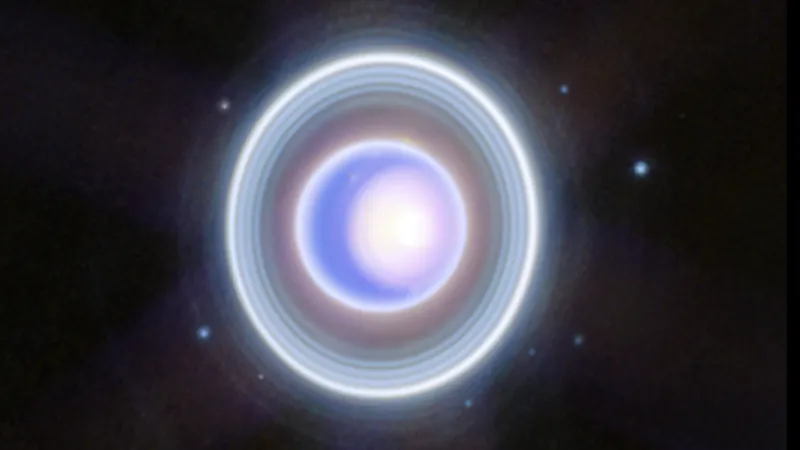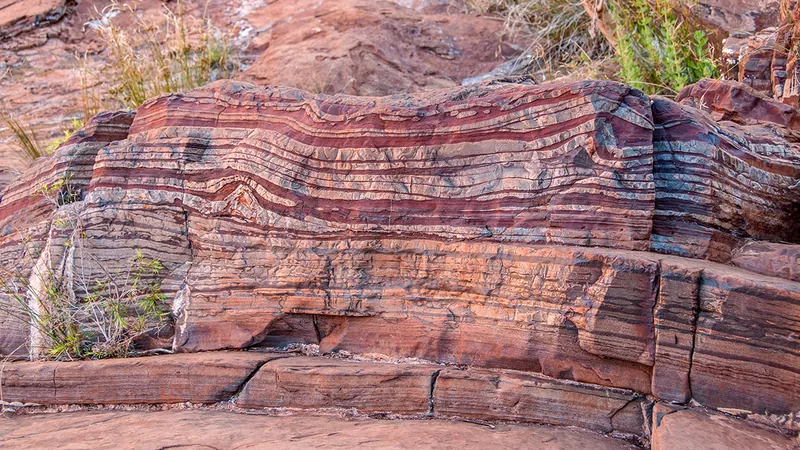
Voyager 2's Fortunate Encounter with Uranus: A Cosmic Coincidence Redefined!
2024-11-12
Author: Liam
Introduction
In a groundbreaking revelation, scientists are re-evaluating the unique characteristics of Uranus, thanks to fresh insights from the data collected by NASA's Voyager 2 spacecraft during its historic flyby nearly four decades ago. Launched in 1977, Voyager 2 remains an emblem of space exploration, having provided the first intimate look at the seventh planet from the Sun back in 1986.
Initial Observations and Mysteries
Initially, the data captured by Voyager 2 painted a puzzling portrait of Uranus, specifically highlighting its unusual magnetosphere—a colossal magnetic field that surrounds the planet. This magnetic environment was filled with energized particles, but interestingly, scientists noted a significant lack of plasma, a critical element necessary for the existence of these energized particles. As a result, Uranus was branded as the planet with a 'weird' magnetosphere, casting a shadow over our understanding of its properties.
New Insights from 1986 Data
But new analysis of Voyager 2's 1986 data may shift our perception dramatically. Researchers propose that an unexpected surge in solar wind pressure could have radically altered Uranus's magnetosphere during the probe's flyby. This surge, comprising a high influx of charged particles, could have compressed the magnetosphere to just 20% of its normal size, leading to a temporary loss of plasma within the system.
The Cosmic Coincidence
According to Jamie Jasinski, lead author on the analysis, 'The spacecraft saw Uranus in conditions that only occur about 4% of the time. If Voyager 2 had arrived just a few days earlier, it would have observed a completely different magnetosphere.' This revelation suggests that our long-standing view of Uranus has been distorted by a mere cosmic coincidence—the timing of Voyager 2’s visit.
Radiation and Geological Activity
Uranus's magnetosphere functions as a protective bubble that shields the planet from harmful cosmic and solar particle radiation. However, the data indicates that its radiation belts are surprisingly intense, second only to those found around Jupiter. Until now, the lack of a recognizable source for these energized particles left many scientists scratching their heads. With the new theory regarding solar wind pressure, the mystery begins to unravel, showing how this injection of charged particles could have contributed to Uranus's intense radiation levels.
Implications for Uranus's Moons
In an exciting twist, this research even hints at the possibility that Uranus’s five major moons—previously considered geologically inactive—might actually exhibit signs of geological activity. 'We were searching for an explanation for its unusual behavior,' noted Linda Spilker, a JPL scientist involved in the study. 'This new work explains some of the apparent contradictions, and it will change our view of Uranus once again.'
Continuing the Voyage
As Voyager 2 continues its journey through space, now nearly 13 billion miles away from Earth, NASA remains in contact, receiving invaluable data that expands our understanding of the solar system. Recently, the agency made the tough decision to turn off one of Voyager 2's scientific instruments to conserve power, ensuring the probe can continue its mission for as long as possible.
Conclusion
Meanwhile, Voyager 1, its sibling spacecraft, has made headlines of its own, further dazzling scientists and space enthusiasts alike. Last year, communication was briefly lost with Voyager 1, causing concern among its operators, but connectivity was remarkably restored, showcasing the resilience of this incredible spacecraft.
In light of these revelations, the story of Uranus is more than just a tale of a strange planet; it’s a reminder of how the cosmos can surprise us, changing our understanding of nature in the most unexpected ways. Keep your eyes on the skies—who knows what we might discover next!









 Brasil (PT)
Brasil (PT)
 Canada (EN)
Canada (EN)
 Chile (ES)
Chile (ES)
 España (ES)
España (ES)
 France (FR)
France (FR)
 Hong Kong (EN)
Hong Kong (EN)
 Italia (IT)
Italia (IT)
 日本 (JA)
日本 (JA)
 Magyarország (HU)
Magyarország (HU)
 Norge (NO)
Norge (NO)
 Polska (PL)
Polska (PL)
 Schweiz (DE)
Schweiz (DE)
 Singapore (EN)
Singapore (EN)
 Sverige (SV)
Sverige (SV)
 Suomi (FI)
Suomi (FI)
 Türkiye (TR)
Türkiye (TR)